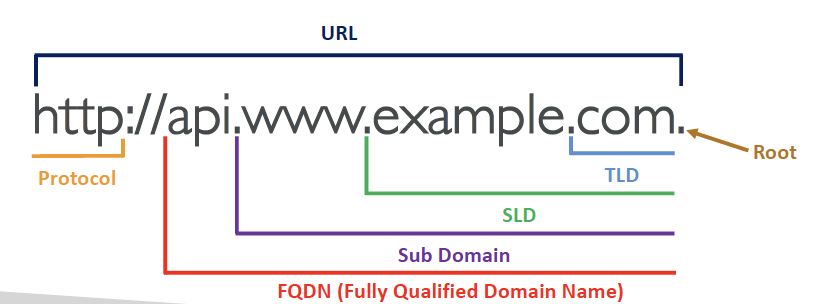Demystifying DNS: AWS Route 53 and Essential Concepts
 Bhaktiben Kadiya
Bhaktiben Kadiya
Understanding DNS and AWS Route 53
DNS is a fundamental component of the internet that translates human-readable domain names into IP addresses, allowing users to access websites and applications. Amazon Route 53 is a highly scalable and reliable DNS web service offered by AWS. It not only provides domain registration services but also offers advanced DNS management capabilities that ensure fast and reliable routing of internet traffic to resources.
DNS Terminologies Explained
Domain Registrar: An entity that manages the registration of domain names. Examples include Amazon Route 53, GoDaddy, and others.
DNS Records: These records provide essential information about a domain's configuration. Common types include A Record, AAAA Record, CNAME Record, NS Record
Zone File: A file that contains DNS records for a specific domain. It defines how the domain and its subdomains are resolved.
Name Server: A server that responds to DNS queries, translating domain names into IP addresses. It can be authoritative (responsible for a specific domain) or non-authoritative (redirecting queries to authoritative servers).
Top Level Domain (TLD): The highest level in the hierarchical domain naming system. Examples include .com, .org, .net, and country-code TLDs like .us and .in.
Second Level Domain (SLD): The segment of the domain name directly to the left of the TLD. For instance, "amazon" in amazon.com and "google" in google.com.

Key Features and Benefits of AWS Route 53
Global Scalability: Route 53's global network of DNS servers allows for efficient and low-latency routing of traffic to geographically distributed resources.
Domain Registration: Easily register and manage domain names through Route 53's intuitive interface.
DNS Health Checks: Monitor the health of your resources and automatically adjust routing to ensure high availability.
Traffic Management: Implement various routing policies for optimized traffic distribution.
Integration with AWS Services: Seamlessly integrate Route 53 with other AWS services. API Access: Automate DNS management tasks using Route 53's API.
Record Types
A Record (Address Record): An A record maps a hostname (e.g., subdomain.example.com) to an IPv4 address. This type of record enables you to associate a specific IP address with a domain, facilitating the translation of human-readable domain names into machine-readable IP addresses.
AAAA Record (IPv6 Address Record): Similar to an A record, an AAAA record maps a hostname to an IPv6 address. With the exhaustion of available IPv4 addresses, IPv6 addresses provide a solution to accommodate the growing number of devices connected to the internet.
CNAME Record (Canonical Name Record): A CNAME record maps a hostname to another hostname. Instead of pointing directly to an IP address, a CNAME acts as an alias for a domain name. This is particularly useful when you want multiple hostnames to resolve to the same IP address. For instance, you could set up a CNAME record to map "www.example.com" to "example.com," ensuring that changes to the IP address are automatically reflected for both.
The target for CNAME Records: When creating a CNAME record, the target is a domain name that must have an associated A or AAAA record. This means that the CNAME record points to another domain name that ultimately resolves to an IP address. CNAME records cannot directly point to IP addresses. A limitation of CNAME records is that they can't be created for the top node of a DNS namespace, known as the zone apex. For example, you can't create a CNAME record for "example.com." However, you can create CNAME records for subdomains like "www.example.com" or any other subdomain.
NS Record (Name Server Record): NS records are essential for identifying the authoritative name servers responsible for a particular domain. These authoritative name servers are the ones that have the definitive information about a domain's DNS records. When someone queries for your domain's DNS information, these NS records point them to the correct name servers that hold that information.
Example Scenarios of Record Types
A Record: Suppose you have a web server with the IP address 203.0.113.1, and you want the domain "blog.example.com" to point to that server. You would create an A record for "blog.example.com" with the value "203.0.113.1."
AAAA Record: If your server has an IPv6 address of 2001:db8::1 and you want "ipv6.example.com" to point to it, you would set up an AAAA record.
CNAME Record: If you want both "www.example.com" and "blog.example.com" to point to the same location as "main.example.com," you can create a CNAME record for each of these subdomains, all pointing to "main.example.com."
NS Record: When setting up a new domain, you specify the name servers responsible for that domain through NS records. These NS records direct queries to the authoritative name servers that hold your domain's DNS information.
Understanding these record types is vital for configuring DNS settings accurately and efficiently within AWS Route 53 or any other DNS management system.
Amazon Route 53 stands as a pinnacle of DNS innovation, providing organizations with a comprehensive suite of tools to manage their domain names, resolve queries with lightning speed, and enhance the availability and reliability of their resources. Its integration with other AWS services, diverse routing policies, and automated health checks ensure that businesses can offer consistent and uninterrupted access to their websites and applications across the globe.
Subscribe to my newsletter
Read articles from Bhaktiben Kadiya directly inside your inbox. Subscribe to the newsletter, and don't miss out.
Written by

Bhaktiben Kadiya
Bhaktiben Kadiya
As a DevOps enthusiast, I am embarking on a journey to become a skilled DevOps Engineer, and I plan to share my learning experiences through blog posts. As a DevOps Engineer, my primary goal is to bridge the gap between development and operations teams by leveraging automation, collaboration, and communication to streamline software development and deployment processes. I recognize that DevOps is not just a set of tools and technologies but also a cultural shift that emphasizes collaboration, agility, and a customer-centric approach. Therefore, in addition to technical skills, I will also focus on soft skills such as communication, teamwork, and problem-solving. Through my blog posts, I aim to share my journey, insights, challenges, and successes as I navigate the world of DevOps. My goal is to provide value to my readers by offering practical advice, tips, and tricks, and inspiring them to embark on their own DevOps journey.